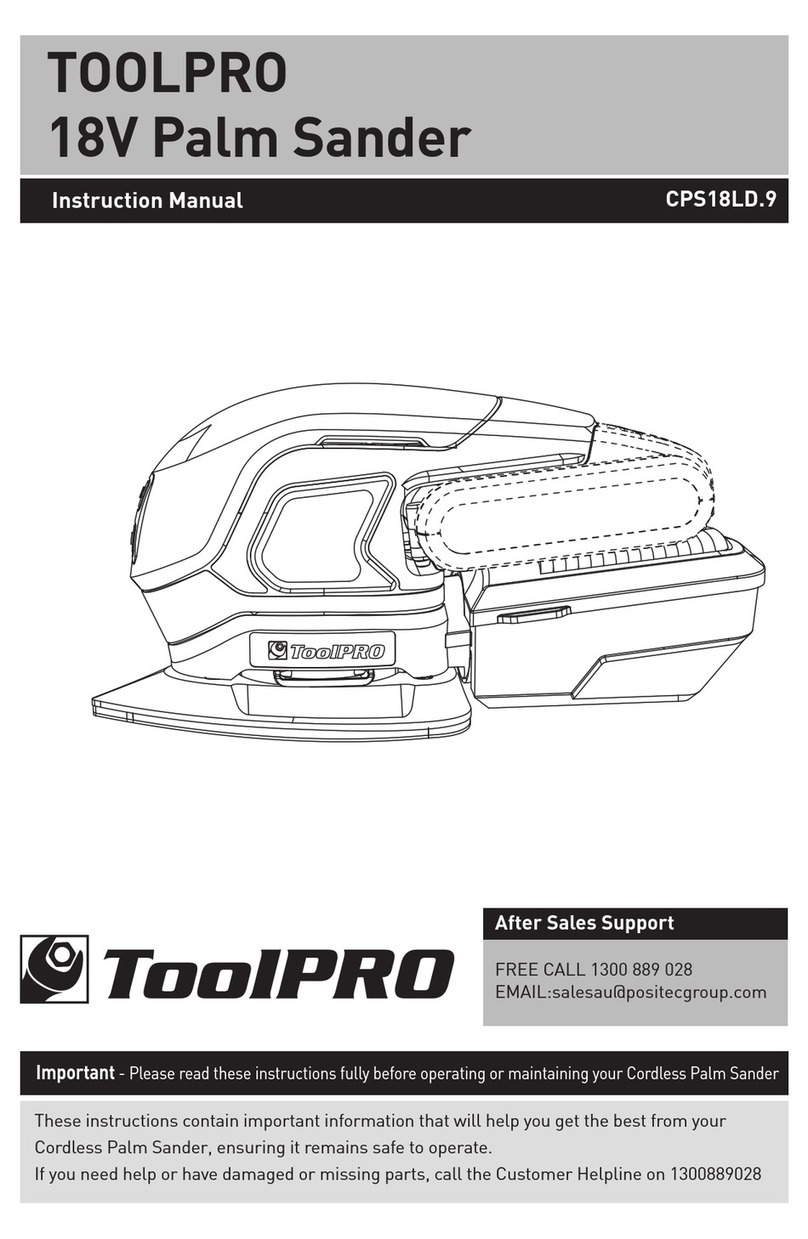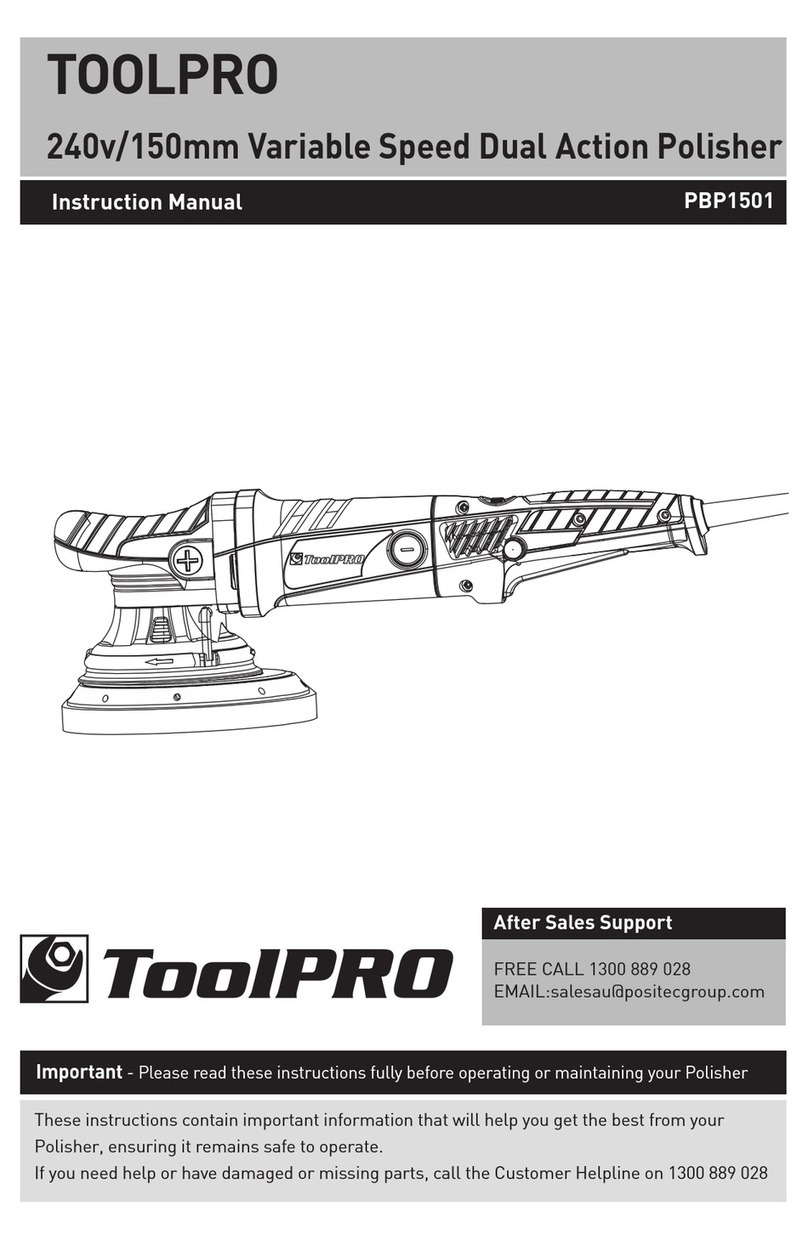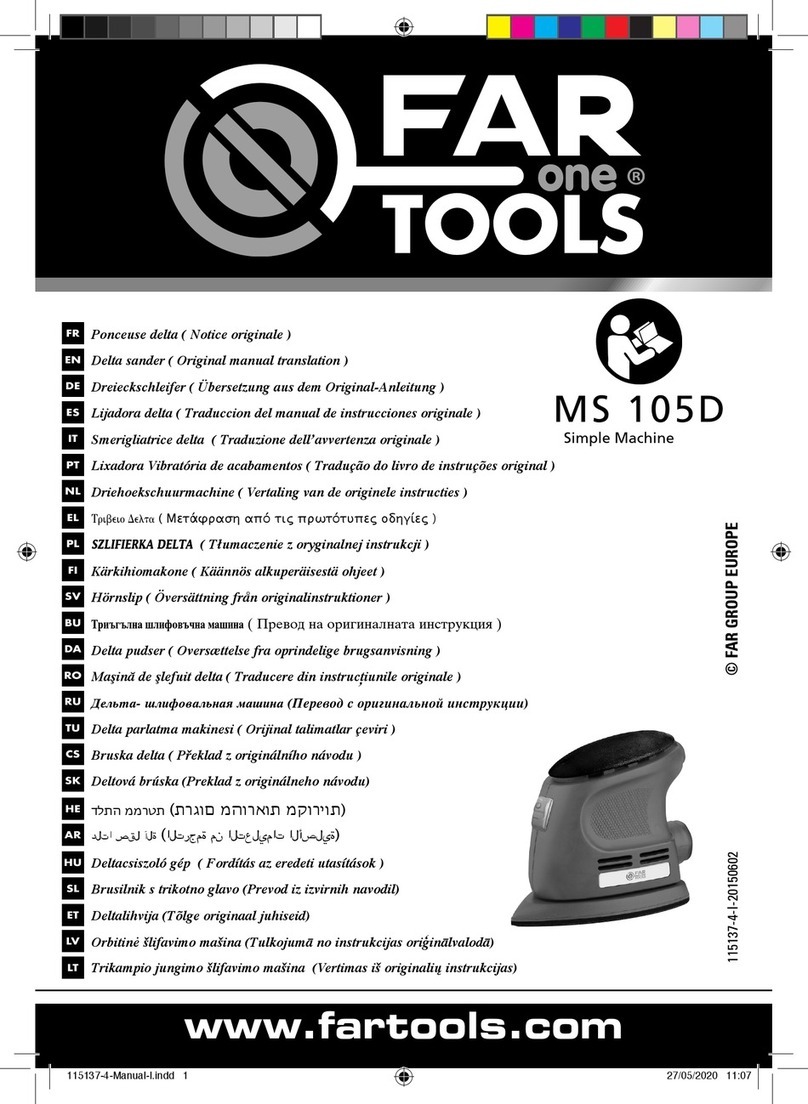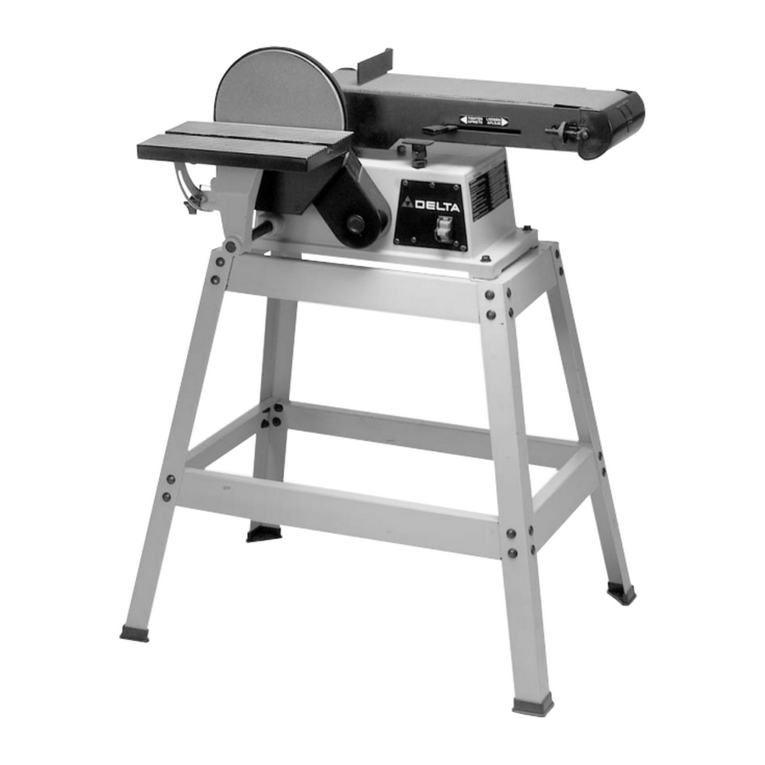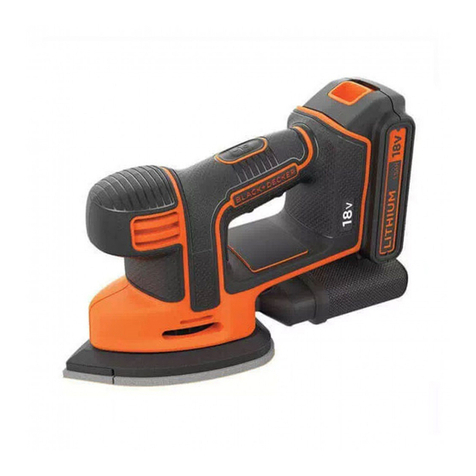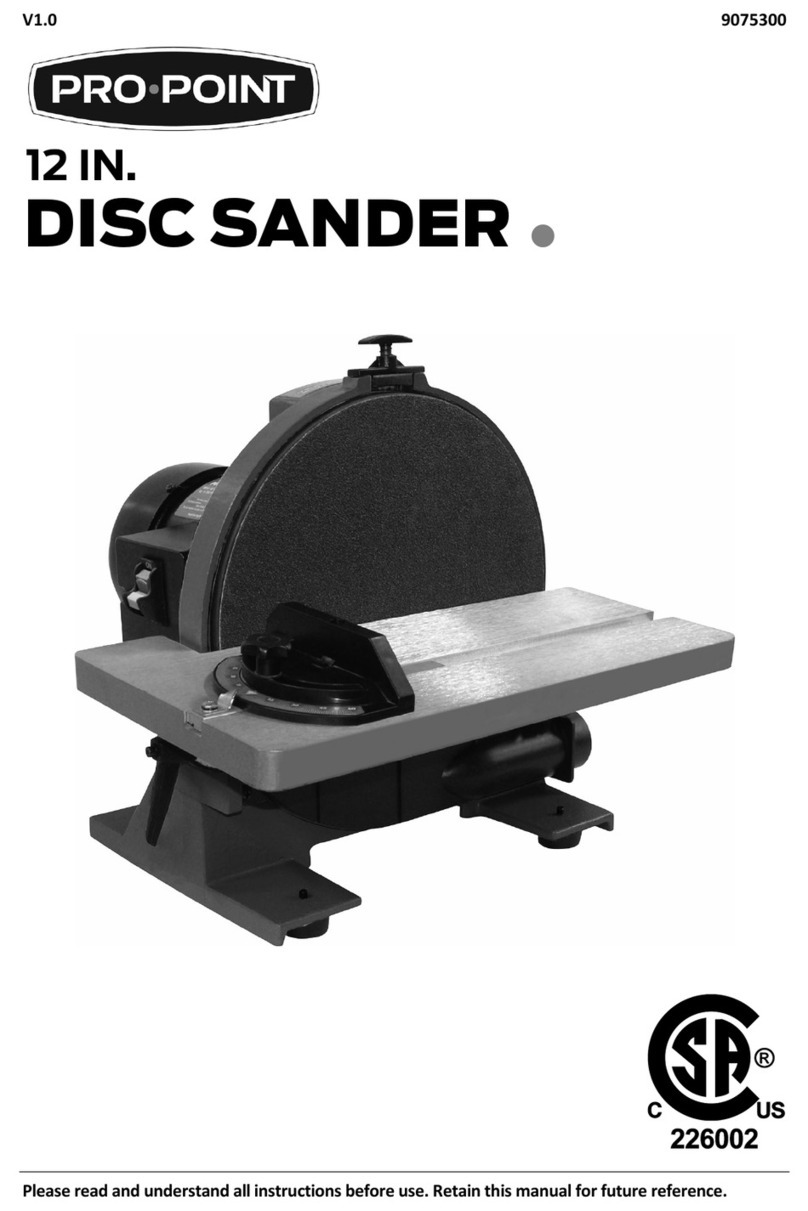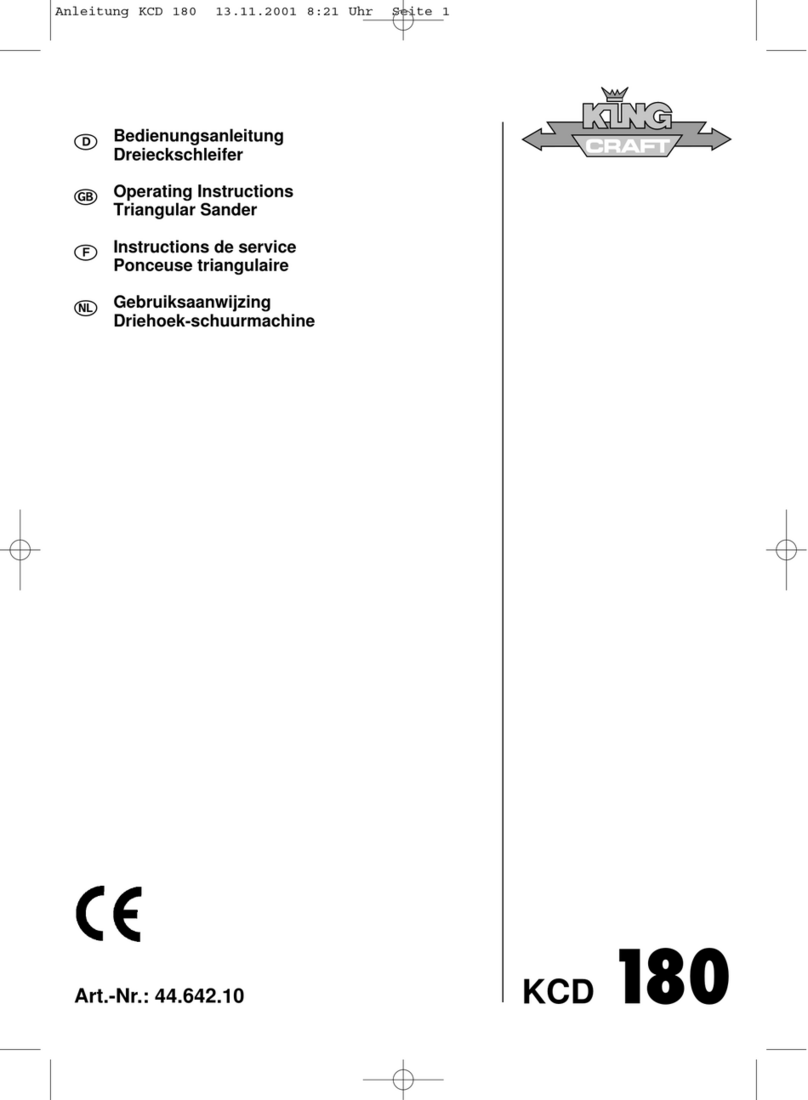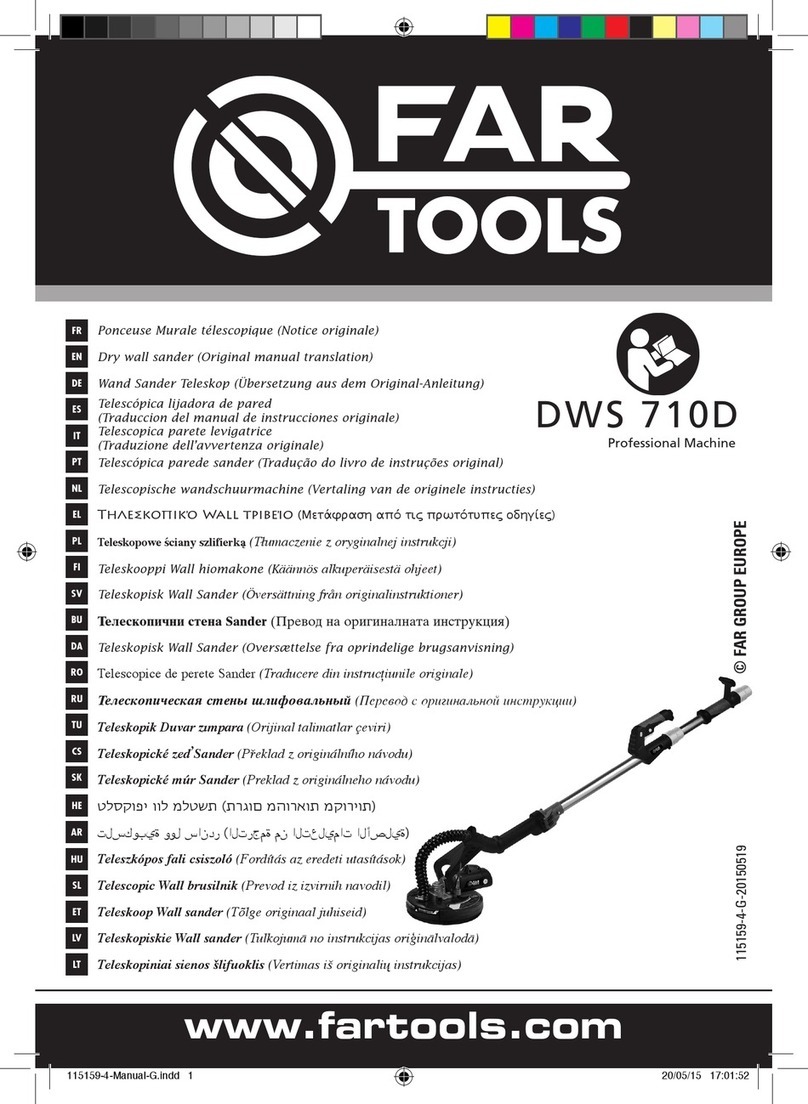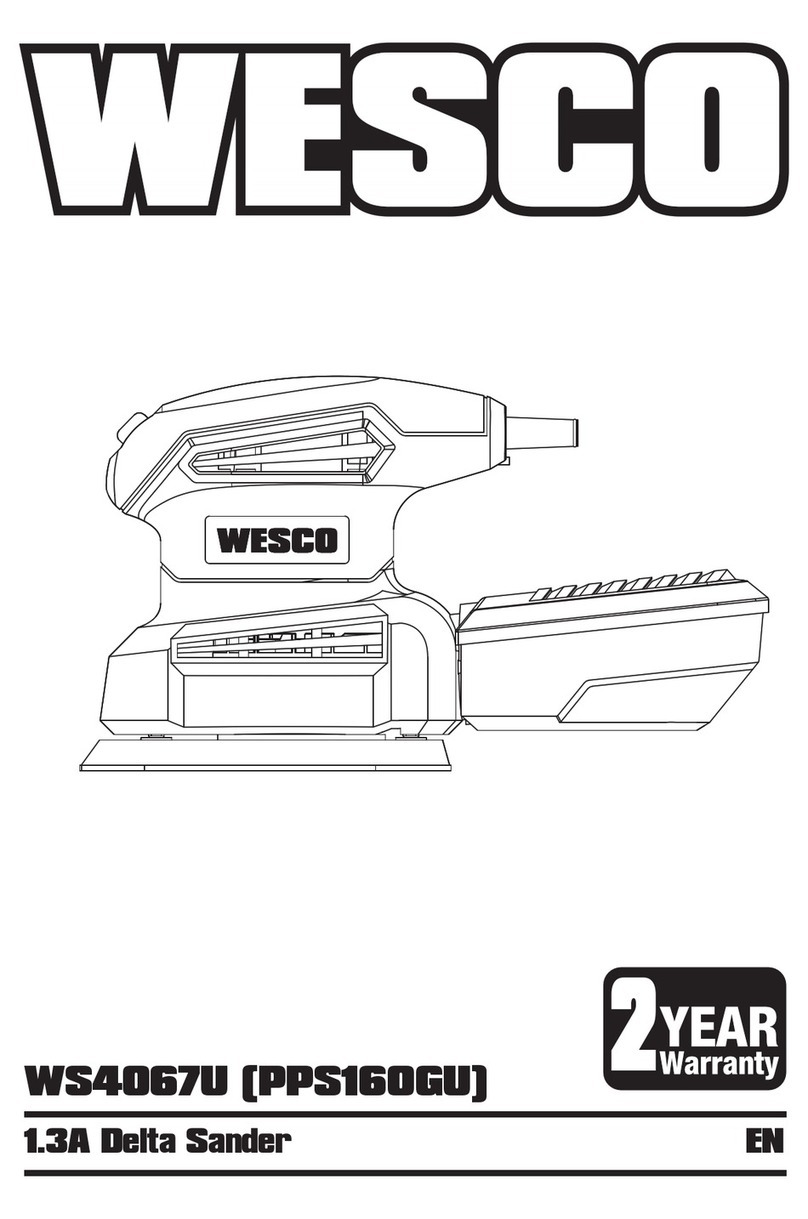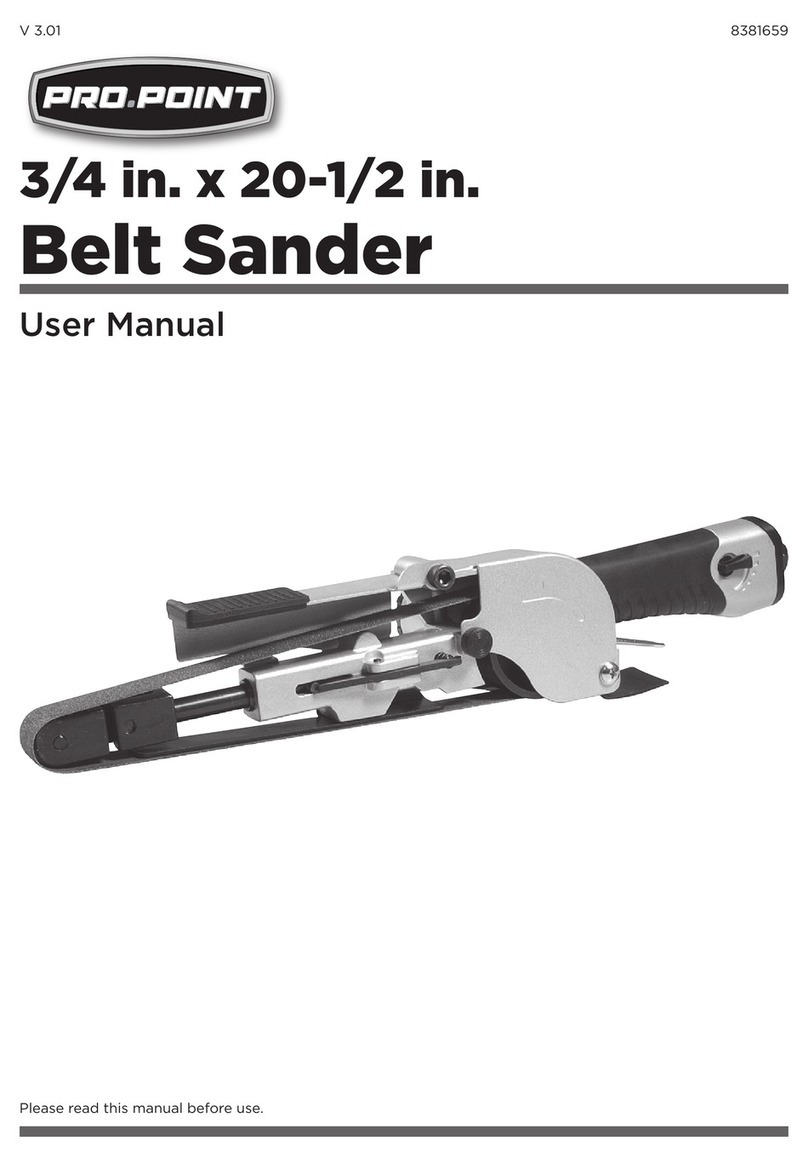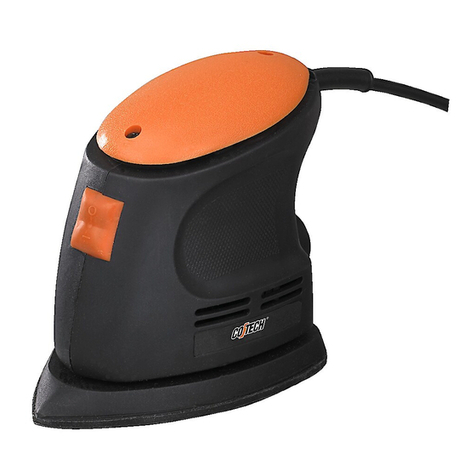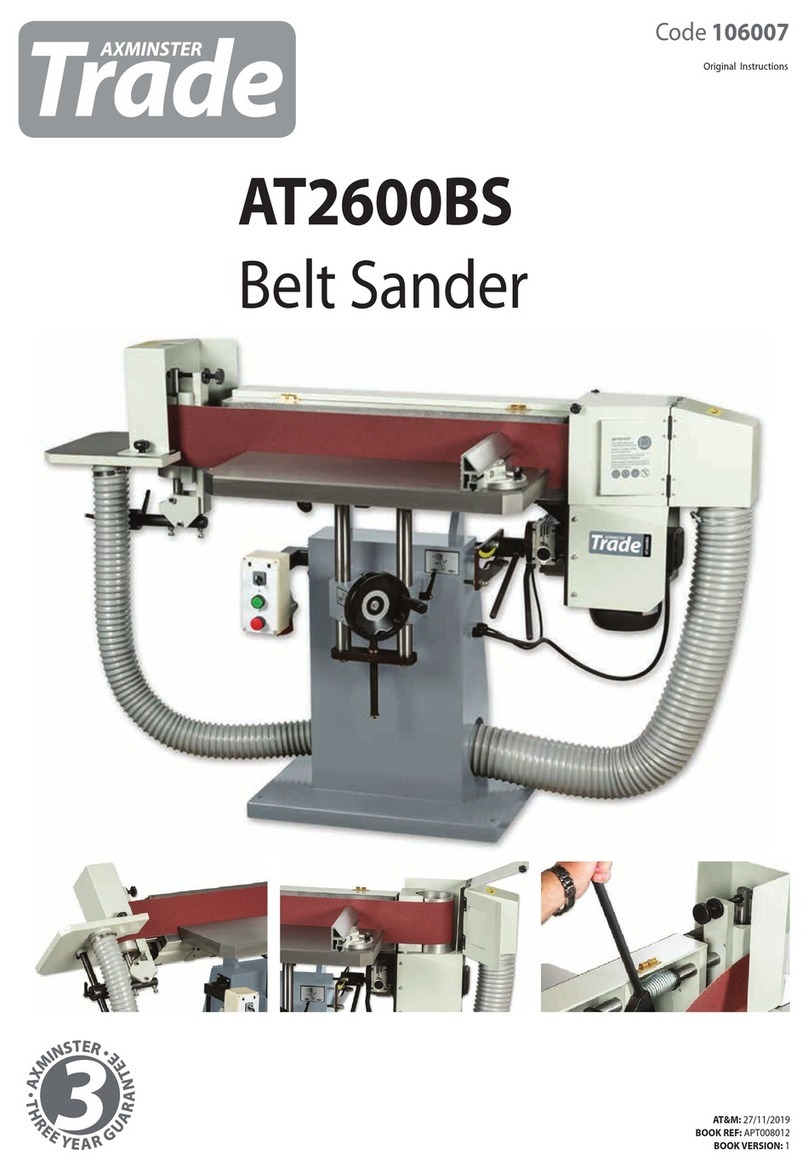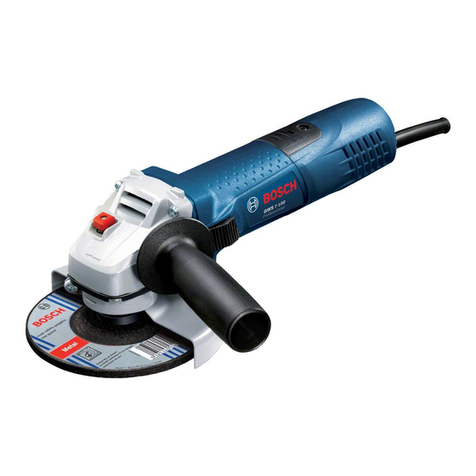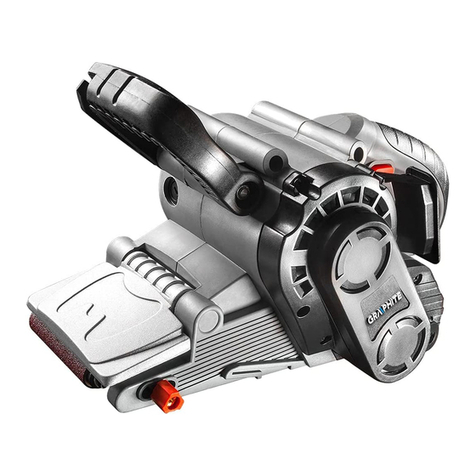ToolPRO CP18BD.9 User manual

TOOLPRO
18V Brushless Polisher
Important - Please read these instructions fully before operating or maintaining your Angle Polisher
These instructions contain important information that will help you get the best from your
Angle Polisher, ensuring it remains safe to operate.
If you need help or have damaged or missing parts, call the Customer Helpline on 1300889028
CP18BD.9
Instruction Manual
After Sales Support
FREE CALL 1300 889 028
EMAIL:salesau@positecgroup.com

Customer Helpline 1300 889 028
2
Contents
Safety Information ....................................................................................................3
In The Box............................................................................................................... 11
Accessories ............................................................................................................ 11
Operating Instructions............................................................................................12
Working Hints For Your Angle Grinder....................................................................18
Maintenance ........................................................................................................... 18
Trouble Shooting ....................................................................................................18
Technical Data ........................................................................................................ 19

Customer Helpline 1300 889 028
3
Safety Information
Important - Please read these instructions fully before starting assembly
Warning Symbols
To reduce the risk of injury, Please read the instruction manual
Warning
Wear ear protection Wear eye protection
Wear dust mask Indoor use only
Do not expose to rain or water Do not burn
Waste electrical products must not be disposed of with household waste. Please recycle
where facilities exist. Check with your local authorities or retailer for recycling advice.
Li-ion battery. This product has been marked with a symbol relating to ‘separate
collection’ for all battery packs and battery pack. It will then be recycled or
dismantled in order to reduce the impact on the environment. Battery packs can be
hazardous for the environment and for human health since they contain hazardous
substances.
Fuse
Positive terminal
Negative terminal
RCM marking
Not permitted for face grinding with abrasive cutting off wheels
ABN: Australian Business Number. By this number, business information such as entity
type, status, business location etc. can be found at website http://abr.business.gov.au.
ABN of Positec Australia Pty Limited is 14 101 682 357
Li-I on Li-Ion

Customer Helpline 1300 889 028
4
WARNING! Read all safety warnings and all instructions. Failure to follow the
warnings and instructions may result in electric shock, fire and/or serious injury.
Save all warnings and instructions for future reference.
The term “power tool” in the warnings refers to your mains-operated (corded) power tool
or battery-operated (cordless) power tool.
1) Work area safety
a) Keep work area clean and well lit. Cluttered or dark areas invite accidents.
b) Do not operate power tools in explosive atmospheres, such as in the presence of
flammable liquids, gases or dust. Power tools create sparks which may ignite the
dust or fumes.
c) Keep children and bystanders away while operating a power tool. Distractions can
cause you to lose control.
2) Electrical safety
a) Power tool plugs must match the outlet. Never modify the plug in any way. Do not
use any adapter plugs with earthed (grounded) power tools. Unmodified plugs and
matching outlets will reduce risk of electric shock.
b) Avoid body contact with earthed or grounded surfaces, such as pipes, radiators,
ranges and refrigerators. There is an increased risk of electric shock if your body is
earthed or grounded.
c) Do not expose power tools to rain or wet conditions. Water entering a power tool will
increase the risk of electric shock.
d) Do not abuse the cord. Never use the cord for carrying, pulling or unplugging the
power tool. Keep cord away from heat, oil, sharp edges or moving parts. Damaged or
entangled cords increase the risk of electric shock.
e) When operating a power tool outdoors, use an extension cord suitable for outdoor
use. Use of a cord suitable for outdoor use reduces the risk of electric shock.
f) If operating a power tool in a damp location is unavoidable, use a residual current
device (RCD) protected supply. Use of an RCD reduces the risk of electric shock.
3) Personal safety
a) Stay alert, watch what you are doing and use common sense when operating a
power tool. Do not use a power tool while you are tired or under the influence of
drugs, alcohol or medication. A moment of inattention while operating power tools
may result in serious personal injury.
b) Use personal protective equipment. Always wear eye protection. Protective
equipment such as dust mask, non-skid safety shoes, hard hat, or hearing protection
used for appropriate conditions will reduce personal injuries.
c) Prevent unintentional starting. Ensure the switch is in the off-position before
connecting to power source and/or battery pack, picking up or carrying the tool.
Carrying power tools with your finger on the switch or energising power tools that
have the switch on invites accidents.
d) Remove any adjusting key or wrench before turning the power tool on. A wrench or a
Safety Information
Important - Please read these instructions fully before starting assembly
General Power Tool Safety Warnings
Original Instructions

Customer Helpline 1300 889 028
5
key left attached to a rotating part of the power tool may result in personal injury.
e) Do not overreach. Keep proper footing and balance at all times. This enables better
control of the power tool in unexpected situations.
f) Dress properly. Do not wear loose clothing or jewellery. Keep your hair, clothing
and gloves away from moving parts. Loose clothes, jewellery or long hair can be
caught in moving parts.
g) If devices are provided for the connection of dust extraction and collection facilities,
ensure these are connected and properly used. Use of dust collection can reduce
dust-related hazards.
4) Power tool use and care
a) Do not force the power tool. Use the correct power tool for your application.
The correct power tool will do the job better and safer at the rate for which it was
designed.
b) Do not use the power tool if the switch does not turn it on and off. Any power tool
that cannot be controlled with the switch is dangerous and must be repaired.
c) Disconnect the plug from the power source and/or the battery pack from the power
tool before making any adjustments, changing accessories, or storing power
tools. Such preventive safety measures reduce the risk of starting the power tool
accidentally.
d) Store idle power tools out of the reach of children and do not allow persons
unfamiliar with the power tool or these instructions to operate the power tool.
Power tools are dangerous in the hands of untrained users.
e) Maintain power tools. Check for misalignment or binding of moving parts, breakage
of parts and any other condition that may affect the power tool’s operation. If
damaged, have the power tool repaired before use. Many accidents are caused by
poorly maintained power tools.
f) Keep cutting tools sharp and clean. Properly maintained cutting tools with sharp
cutting edges are less likely to bind and are easier to control.
g) Use the power tool, accessories and tool bits etc. in accordance with these
instructions, taking into account the working conditions and the work to be
performed. Use of the power tool for operations different from those intended could
result in a hazardous situation.
5) Battery tool use and care
a) Recharge only with the charger specified by the manufacturer. A charger that is
suitable for one type of battery pack may create a risk of fire when used with another
battery pack.
b) Use power tools only with specifically designated battery packs. Use of any other
battery packs may create a risk of injury and fire.
c) When battery pack is not in use, keep it away from other metal objects, like paper
clips, coins, keys, nails, screws or other small metal objects, that can make a
connection from one terminal to another. Shorting the battery terminals together
may cause burns or a fire.
d) Under abusive conditions, liquid may be ejected from the battery; avoid contact.
Safety Information
Important - Please read these instructions fully before starting assembly
General Power Tool Safety Warnings

Customer Helpline 1300 889 028
6
If contact accidentally occurs, flush with water. If liquid contacts eyes, additionally
seek medical help. Liquid ejected from the battery may cause irritation or burns.
6) Service
Have your power tool serviced by a qualified repair person using only identical
replacement parts. This will ensure that the safety of the power tool is maintained.
Safety Warnings Common for Polishing:
a) This power tool is intended to function as a polisher. Read all safety warnings,
instructions, illustrations and specifications provided with this power tool. Failure
to follow all instructions listed below may result in electric shock, fire and/or serious
injury.
b) Operations such as grinding, sanding, wire brushing, or cutting-off are not
recommended to be performed with this power tool. Operations for which the power
tool was not designed may create a hazard and cause personal injury.
c) Do not use accessories which are not specifically designed and recommended by the
tool manufacturer. Just because the accessory can be attached to your power tool, it
does not assure safe operation.
d) The rated speed of the accessory must be at least equal to the maximum speed
marked on the power tool. Accessories running faster than their rated speed can
break and fly apart.
e) The outside diameter and the thickness of your accessory must be within the
capacity rating of your power tool. Incorrectly sized accessories cannot be adequately
guarded or controlled.
f) Threaded mounting of accessories must match the grinder spindle thread. For
accessories mounted by flanges, the arbour hole of the accessory must fit the
locating diameter of the flange. Accessories that do not match the mounting
hardware of the power tool will run out of balance, vibrate excessively and may cause
loss of control.
g) Do not use a damaged accessory. Before each use inspect the accessory such as
backing pad for cracks, tear or excess wear. If power tool or accessory is dropped,
inspect for damage or install an undamaged accessory. After inspecting and
installing an accessory, position yourself and bystanders away from the plane of the
rotating accessory and run the power tool at maximum no-load speed for one minute.
Damaged accessories will normally break apart during this test time.
h) Wear personal protective equipment. Depending on application, use face shield,
safety goggles or safety glasses. As appropriate, wear dust mask, hearing
protectors, gloves and workshop apron capable of stopping small abrasive or
workpiece fragments. The eye protection must be capable of stopping flying debris
generated by various operations . The dust mask or respirator must be capable of
filtrating particles generated by your operation. Prolonged exposure to high intensity
noise may cause hearing loss.
Safety Information
Important - Please read these instructions fully before starting assembly
General Power Tool Safety Warnings
Safety Instructions For All Operations

Customer Helpline 1300 889 028
7
Safety Instructions For All Operations
Safety Information
Important - Please read these instructions fully before starting assembly
i) Keep bystanders a safe distance away from work area. Anyone entering the work
area must wear personal protective equipment. Fragments of workpiece or of a
broken accessory may fly away and cause injury beyond immediate area of operation.
k) Never lay the power tool down until the accessory has come to a complete stop. The
spinning accessory may grab the surface and pull the power tool out of your control.
l) Do not run the power tool while carrying it at your side. Accidental contact with the
spinning accessory could snag your clothing, pulling the accessory into your body.
m) Regularly clean the power tool’s air vents. The motor’s fan will draw the dust inside
the housing and excessive accumulation of powdered metal may cause electrical
hazards.
n) Do not operate the power tool near flammable materials. Sparks could ignite these
materials.
o) Do not use accessories that require liquid coolants. Using water or other liquid
coolants may result in electrocution or shock.
Kickback and Related Warnings
Kickback is a sudden reaction to a pinched or snagged rotating wheel, backing pad,
brush or any other accessory. Pinching or snagging causes rapid stalling of the rotating
accessory which in turn causes the uncontrolled power tool to be forced in the direction
opposite of the accessory’s rotation at the point of the binding.
For example, if an abrasive wheel is snagged or pinched by the workpiece, the edge of the
wheel that is entering into the pinch point can dig into the surface of the material causing
the wheel to climb out or kick out. The wheel may either jump toward or away from
the operator, depending on direction of the wheel’s movement at the point of pinching.
Abrasive wheels may also break under these conditions.
Kickback is the result of power tool misuse and/or incorrect operating procedures or
conditions and can be avoided by taking proper precautions as given below.
a) Maintain a firm grip on the power tool and position your body and arm to allow you to
resist kickback forces. Always use auxiliary handle, if provided, for maximum control
over kickback or torque reaction during start-up. The operator can control torque
reactions or kickback forces, if proper precautions are taken.
b) Never place your hand near the rotating accessory. Accessory may kickback over your
hand.
c) Do not position your body in the area where power tool will move if kickback occurs.
Kickback will propel the tool in direction opposite to the wheel’s movement at the point
of snagging.
d) Use special care when working corners, sharp edges etc. Avoid bouncing and snagging
the accessory. Corners, sharp edges or bouncing have a tendency to snag the rotating
accessory and cause loss of control or kickback.
e) Do not attach a saw chain woodcarving blade or toothed saw blade. Such blades create
frequent kickback and loss of control.
Further safety instructions for all operations

Customer Helpline 1300 889 028
8
Safety Warnings Specific for Polishing Operations:
Safety Information
Important - Please read these instructions fully before starting assembly
a) Do not allow any loose portion of the polishing bonnet or its attachment strings
to spin freely. Tuck away or trim any loose attachment strings. Loose and spinning
attachment strings can entangle your fingers or snag on the workpiece.
a) Do not dismantle, open or shred cells or battery pack.
b) Do not short-circuit a battery pack. Do not store battery packs haphazardly in a box or
drawer where they may short-circuit each other or be short-circuited by conductive
materials. When battery pack is not in use, keep it away from other metal objects, like
paper clips, coins, keys, nails, screws or other small metal objects, that can make a
connection from one terminal to another. Shorting the battery terminals together may
cause burns or a fire.
c) Do not expose battery pack to heat or fire. Avoid storage in direct sunlight.
d) Do not subject battery pack to mechanical shock.
e) In the event of battery leaking, do not allow the liquid to come into contact with the
skin or eyes. If contact has been made, wash the affected area with copious amounts of
water and seek medical advice.
f) Seek medical advice immediately if a cell or battery pack has been swallowed.
g) Keep battery pack clean and dry.
h) Wipe the battery pack terminals with a clean dry cloth if they become dirty.
i) Battery pack needs to be charged before use. Always refer to this instruction and use
the correct charging procedure.
j) Do not maintain battery pack on charge when not in use.
k) After extended periods of storage, it may be necessary to charge and discharge the
battery pack several times to obtain maximum performance.
l) Battery pack gives its best performance when it is operated at normal room
temperature (20 °C ± 5 °C).
m) When disposing of battery packs, keep battery packs of different electrochemical
systems separate from each other.
n) Recharge only with the charger specified by POSITEC. Do not use any charger other
than that specifically provided for use with the equipment. A charger that is suitable for
one type of battery pack may create a risk of fire when used with another battery pack.
o) Do not use any battery pack which is not designed for use with the equipment.
p) Keep battery pack out of the reach of children.
q) Retain the original product literature for future reference.
r) Remove the battery from the equipment when not in use.
s) Dispose of properly.
Safety Warnings for battery pack

Customer Helpline 1300 889 028
9
Safety Information
Important - Please read these instructions fully before starting assembly
WARNING: Read all safety warnings and all instructions. Failure to follow the
warnings and instructions may result in electric shock, fire and/or serious injury.
Save all warnings and instructions for future reference.
- This appliance is not intended for use by persons (including children) with reduced
physical, sensory or mental capabilities, or lack of experience and knowledge, unless they
have been given supervision or instruction concerning use of the appliance by a person
responsible for their safety.
- Children should be supervised to ensure that they do not play with the appliance.
If the supply cord is damaged, it must be replaced by the manufacturer, its service agent
or similarly qualified persons in order to avoid a hazard.
1. Before charging, read the instructions.
2. For charge Li-ion battery pack only.
3. Do not charge a leaking battery.
4. Do not use chargers for works other than those for which they are designed.
5. Before charging, ensure your charger is matching the local AC supply.
6. The charging device must be protected from moisture.
7. Do not use the charging device in the open.
8. Do not short out the contacts of battery or charger.
9. Respect the polarity “+/-“ when charging.
10.Do not open the unit and keep out of the reach of children.
11.Do not charge the batteries of other manufactures or ill-suited models.
12.Ensure that the connection between the battery charger and battery is correctly
positioned and is not obstructed by foreign bodies.
13.Keep battery charger’s slots are free of foreign objects and protect against dirt and
humidity. Store in a dry and frost-free place.
14.When charging batteries, ensure that the battery charger is in a well-ventilated area
and away from inflammable materials. Batteries can get hot during charging. Do not
overcharge any batteries. Ensure that batteries and chargers are not left unsupervised
during charging.
15.Do not recharge non-rechargeable batteries, as they can overheat and break.
16.Longer life and better performance can be obtained if the battery pack is charged when
the air temperature is between 18oC and 24oC. Do not charge the battery pack in air
temperatures below 4.5oC, or above 40.5oC. This is important as it can prevent serious
damage to the battery pack.
17.Charge only battery pack of the same model provided by POSITEC and of models
recommended by POSITEC
General Safety Warnings
Additional safety instructions for your Battery Charger

Customer Helpline 1300 889 028
10
In The Box
Parts
1
2
3
4
5
6
7
8
Battery pack release button*
Battery pack*
Velcro backing pad
Foam disc*
Spindle lock button
Auxiliary handle
On/Off Switch
Handle
Accessories
Auxiliary handle 1pc
Velcro backing pad 1pc
78
2 1 3 4 5 6

Customer Helpline 1300 889 028
11
Operating Instructions
NOTE: Before using the tool, read the instruction book carefully.
Intended Use
The machine is intended for polishing floor, car and other coated surfaces.
1. ASSEMBIY
1.1 Assemble the auxiliary Handle (See Fig. A)
For your personal safety we recommend using the auxiliary handle at all time. There are 3
install position for auxiliary handle for easy control. Rotate the handle clockwise. Tighten
fully.
1.2 Assemble the Velcro backing pad and the Foam disc .
Assemble the Velcro backing pad and the Foam disc .
Lock or loose the Velcro backing pad, the spindle lock button should be pressed. Screw
Velcro backing pad securely on the tool. (See Fig. B1)
Place Foam disc securely on rotary plate and make sure it’s centrosymmetric. Otherwise
the polisher vibrates badly. (See Fig. B2)
NOTE: Remove the battery pack from the socket before carrying out the adjustment.
A B1
B2

Customer Helpline 1300 889 028
12
Operating Instructions
2.BEFORE PUTTING INTO OPERATION
WARNING: The charger and battery pack are specially designed to work together so
do not attempt to use any other devices. Never insert or allow metallic objects into your
charger or battery pack connections because of an electrical failure and hazard will occur.
CHARGING THE BATTERY PACK
CHARGER ACG318GL
NOTE:
a) Do not use any charger other than that specifically provided for use with the
equipment.
b) If the battery pack is very hot you must remove your battery pack from the charger and
allow time for the battery to cool down before recharging.
c) The battery in your new tool is not charged when it leaves the plant. Therefore it must
be full charged before using the first time.
d) Please charge the battery to reach full or no less than half charge before storage. If the
tool will not be used for long periods of time, charge the battery every 3-6 months.
CHARGING PROCEDURE (SEE FIG. C1)
1) Plug the charger into an appropriate outlet. The light will be green.
2) Slide the battery pack into the charger, the light will turn to red to indicate the charging
process has started.
3) When charging is completed, the light will turn to green. The pack is now fully charged,
unplug the charger and remove the battery pack.
WARNING: When battery charge runs out after continuous use or exposure to
direct sunlight or heat, allow time for the battery to cool down before re-charging
to achieve the full charge.
CHARGING INDICATOR
This charger is designed to detect some problems that can arise with battery packs.
Indicator lights indicate problems (see table below). If this occurs, insert a new battery pack
to determine if the charger is OK. If the new battery charges correctly, then the original
pack is defective and should be returned to a service center or recycling service center.
If the new battery pack displays the same problem as the original Battery Pack, have the
charger tested at an authorized service center.
C1

Customer Helpline 1300 889 028
13
Operating Instructions
Light Status
Red on Charging
Green on Fully Charged
Light off Defective Battery
CHARGER ACG18LD / ACG18LD3
Do not use any charger other than that specifically provided for use with the equipment.
If the battery pack is very hot you must remove your battery pack from the charger and
allow time for the battery to cool down before recharging.
Please charge the battery to reach full before storage. If the tool will not be used for long
periods of time, charge the battery every 3 months.
CHARGING PROCEDURE (SEE FIG. C2-C4)
1) Plug the charger into an appropriate outlet. The light will be green.
2) ) Slide the battery pack into the charger, make sure the battery is in the correct charge
position firmly. the light will turn to red to indicate the charging process has started.
3) When charging is completed, the light will turn to green.
4) After fully charged, unplug the charger and remove the battery pack.
Red light
Green light
C2
C4
C3

Customer Helpline 1300 889 028
14
Operating Instructions
NOTE: If the battery pack is locked in the charger, press the battery pack release button and
remove it.
WARNING: When battery charge runs out after continuous use or exposure to
direct sunlight or heat, allow time for the battery to cool down before re-charging
to achieve the full charge.
CHARGING INDICATOR
This charger is designed to detect some problems that can arise with battery packs.
Indicator lights indicate problems (see table below). If this occurs, insert a new battery pack
to determine if the charger is OK. If the new battery charges correctly, then the original
pack is defective and should be returned to a service center or recycling service center.
If the new battery pack displays the same problem as the original Battery Pack, have the
charger tested at an authorized service center.
Light ON/OFF flash Status
Red on Charging
Red flash - - - - - Defective Battery
Green on Fully Charged
Green flash - - - - - - Battery Too Hot/Cold
NOTE:
a) Do not use any charger other than that specifically provided for use with the
equipment.
b) If the battery pack is very hot you must remove your battery pack from the charger and
allow time for the battery to cool down before recharging.
c) The battery in your new tool is not charged when it leaves the plant. Therefore it must
be full charged before using the first time.
d) Please charge the battery to reach full or no less than half charge before storage. If the
tool will not be used for long periods of time, charge the battery every 3-6 months.
CHARGING PROCEDURE (SEE FIG. C5)
1) Plug the charger into an appropriate outlet. The light will be green.
2) Slide the battery pack into the charger, the light will turn to red to indicate the charging
process has started.
3) When charging is completed, the light will turn to green. The pack is now fully charged,
unplug the charger and remove the battery pack.
WARNING: When battery charge runs out after continuous use or exposure to
direct sunlight or heat, allow time for the battery to cool down before re-charging to
achieve the full charge.

Customer Helpline 1300 889 028
15
Operating Instructions
CHARGING INDICATOR
This charger is designed to detect some problems that can arise with battery packs.
Indicator lights indicate problems (see table below). If this occurs, insert a new battery pack
to determine if the charger is OK. If the new battery charges correctly, then the original
pack is defective and should be returned to a service center or recycling service center.
If the new battery pack displays the same problem as the original Battery Pack, have the
charger tested at an authorized service center.
NOTE: The accessories of battery charger (ACG318GL/ACG18LD/ACG18LD3/ACG218Z2)
and battery pack (ABP118L1/ ABP118L2/ ABP118L25/ABP218L4Z/ABP118L6) illustrated or
described are not included in CBP18GD.9 delivery.
Light ON/OFF flash Status
Red on Charging
Red flash - - - - - Defective Battery
Green on Fully Charged
Green flash - - - - - - Battery Too Hot/Cold
Red light
Green light
C5

Customer Helpline 1300 889 028
16
OPERATION
1.SPREAD THE POLISH (SEE FIG. D)
Spread about a tablespoonful of polish evenly over the entire surface of the pad cover. Do
not apply polish directly to car. The pad cover will not adsorb as much when reloading.
2. ON/OFF SWITCH (SEE FIG. E)
Always start and stop the polisher on against the car surface. Push the On/Off Switch
forward as the arrow of “I” position shown to start the polisher. Push the switch backward
as the arrow of “O” position shown to stop the polisher.
NOTE: The machine is equipped with the function of Accidental Start Protection. The machine
will not run when you put the battery on the machine if switch is engaged “on” position to make
sure safety to user. The machine will work only after you switching off and switching on again.
3. HAND GRIP AREAS(SEE FIG. F)
Always hold your car polisher firmly with both hands when operating.
WARNING: Always hold your car polisher firmly with both hands when operating.
4. VARIABLE SPEED SWITCH ( SEE FIG. G)
The speed increases as you turn the Variable Speed Switch towards the higher number and
decreases on the lower number.
Thumbwheel position 1 provides the slowest operating speed and position 6 the fastest.
Operating Instructions
D E
F

Customer Helpline 1300 889 028
17
Operating Instructions
Speed may be changed while motor is running or while it is stopped (polisher works best on
settings between position 4-6).
Number step Speed range Operation
1-3 850-1650/min Recommend for lay on wax
4-6 2000-2800/min Polishing operation
5. TO USE THE CAR POLISHER (SEE FIG. H)
Inside the battery pack into unit and do flat surfaces first, i.e.: bonnet boot and roof. Cover
areas quickly with broad sweeping strokes in a crisscross pattern. Do not press down on
polisher. The machine without any pressure will automatically do the best job.
6. FINAL WORK (SEE FIG. I)
Use long, sweeping strokes in a criss-cross pattern to bring out the shine. Do not over-press the polisher.
7. SANDING
Choose sanding paper carefully for each application for best operation and finish.
To have the best sanding result, it is recommended to work with lower speed.
Use the sanding feature for sanding off old paint from timber and metal surface. It can also
be used for sanding timber smooth.
G
I
H

Customer Helpline 1300 889 028
18
1. At all times, let the polisher do the work-do not force it or apply excessive pressure to
the polisher. Preferably, use a light circular motion.
Pressing too hard will slow down the machine’s movement and affect the quality of the
work.
2. The most common error, however, is applying too much wax. If pad absorbs too much
wax, it will not last as long, and polishing is more difficult and takes longer.
3. If foam disc continually comes off Velcro backer pad, please try with a new foam disc.
4. If wax seems difficult to buff, you may have used too much wax.
5. The tool cannot be placed on the paint surface, there is a risk of scratching the paint.
Maintenance
Trouble Shooting
Remove the battery pack from the socket before carrying out any adjustment, servicing
or maintenance.
Your power tool requires no additional lubrication or maintenance. There are no user
serviceable parts in your power tool. Never use water or chemical cleaners to clean your
power tool. Wipe clean with a dry cloth. Always store your power tool in a dry place. Keep
the motor ventilation slots clean. Keep all working controls free of dust. Occasionally you
may see sparks through the ventilation slots. This is normal.
1. If your power tool does not start, check the battery pack on the tool first.
2. If the polisher does not abrade surface, checking the pad. If the pad has been worn,
replace the new pad and try again.
3. If a fault cannot be rectified, return the tool to an authorized dealer for repair.
Working Hints For Your Polisher

Customer Helpline 1300 889 028
19
Technical Data
Technical Data Table
Staple your purchase receipt here
Before returning this product for
warranty or any other reason, please call.
POSITEC AUSTRALIA PTY LIMITED
ABN 14 101 682 357
Unit 15, 23 Narabang Way Belrose 2085 NSW Australia
FREE CALL 1300 889 028
EMAIL:salesau@positecgroup.com
Voltage 18 V
No-load speed 850-2800 /min
Pad size 7”(180mm)
Weight 1.8 kg
Charging
time
1.5Ah battery 2.0Ah battery 4.0Ah battery
400mA charger
(HYCH0102000400S) 3-5hrs 5-7hrs 10-12hrs
1.5A Charger
(ACG18LD) 60min 80min 160min
3.0A Charger
(ACG18LD3) 40min 60min 120min
Charger Input 100-240V~50/60Hz
Charger Output
10.8--20V 400mA by slow charger
10.8--20V 1.5A by 1.5A fast charger
14.4--20V 3.0A by 3.0A fast charger
Applicable battery 1.5/2.0/4.0Ah Li-ion battery
Charger Protection class /II

Table of contents
Other ToolPRO Sander manuals
